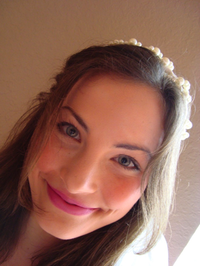Character and Figures of Speech:
Welcome!

“The critical debate about early-modern
acting styles," Yu Jin Ko rightly observes,
“still largely centers on, but remains
divided about, the question of whether
the acting leaned more less towards on
of the two poles labeled long ago as
‘naturalism’ and ‘formalism,’ though
related if not entirely interchangeable
binary oppositions between ‘inwardness’
and ‘rhetorical character,’ ‘representation’
and ‘presentation,’ or ‘identification’ and ‘alienation’ come into
play as well.”[1] Though we acknowledge such divides, we find them
overstated. For the classically trained actor need not appear
statuesque or overly formal; to the contrary, Cicero recommends that
a speaker must experience what he or she wishes his audience to
experience, a feeling conveyed to others must be emoted first
in a speaker.[2] Such feeling, what Stanislavsky found essential
to naturalism, Cicero supposed to exist already in the language.[3]
Our actors, then, may discover the characters they play not only
in the self but also in the words they perform. Each actor blends
his or her own unique voice and body with the language of the
role that he or she plays. So we welcome contemporary
techniques that help actors make the language "their own" but
emphasize mastery of Shakespeare's language above all, what it
reveals in terms of thought and feeling. In the links on figures of
speech, explore how repetition incites passion, or how figures of
syntactical arrangement show actors how to perform
arguments, or even how figures may convey dynamic changes
of mind or feeling, revealing a character’s conscious and swift
movements of alteration.[4]
Rehearsal or Study?
Tiffany Stern argues that “study” rather than “rehearsal” is a
better term to describe how a Shakespearean actor would prepare.
Study refers to “private learning” and to “learning with a teacher”
and would be the means of suiting word to gesture.[5] In this way,
the actor followed “the classical rhetorical tradition,” which
included “action,” or gesture and facial expression, and
“pronunciation,” or cadence and figures of speech.[6] To reflect
an early modern actor’s preparation, we complete a “part text
analysis" for each role. Actors work with “sides,” that is, with
just the part of the text that includes their lines: They paraphrase
Shakespeare’s words into contemporary English, scan lines if they
are in verse, mark breaths or pauses, note figures of speech, and
create an emotional map, identifying changes of feeling. After
such analysis, actors rehearse with a director or a voice coach,
experimenting with their findings, in an attempt to learn more
about the characters they play. Though we rehearse like a
modern company in ensemble as well, we ask all our actors “to
study,” especially before they begin memorization or blocking.
Talking to Audiences
With proscenium theatre productions, an imaginary boundary
exists between audience and actor, a so-called "fourth wall" which
is supposed to be at the front of the stage. An audience sees
through that fourth wall and into the action of the play. Such
convention maintains theatrical “realism,” keeping actors bound
within the mimetic world of the story. In modern theatre, to
break the "fourth wall" means deconstructing the boundaries of
illusion, creating moments of “meta-theatre” for characters to
comment upon the play as a play or to make anachronistic
reference or to engage audiences in other ways outside of the
drama.
Shakespeare’s scaffold, however, afforded other
possibilities. Instead of deconstructing the fiction, speaking to
audiences could enhance it. As Robert Weimann speculates, the
stage’s locus distances an actor from an audience, facilitating the
play’s “mimetic representation,” but when an actor moves to the
platea, or approaches audiences, he may engage spectators in a
“non-representational” setting, providing an area for actor-
audience contact.[7] You can find our Orlando moving between
the locus and platea and back again in the video below:
Even so, Weimann makes an important clarification about locus
and platea: “What is involved, though, is not the confrontation of
the world and time of the play with that of the audience, or any
serious opposition between representational and non-
representational standards of acting, but the most intense
interplay of both” (80-81). Indeed, our actors often speak directly
to audiences so that we may invite them into the play's
illusory world, thereby creating a heightened experience of
audience participation in the play's fiction. Most often, actor-
audience contact occurs in soliloquy but we find other moments of
interaction for communal imaginative exercise. Thus, when
Orlando in As You Like hangs his verses in the forest of Arden, his
spectators help him by "playing" his trees and holding his poems:
An audience member, then, may not only visit Arden but also
become part of it. In practices such as these, we follow the spirit
of Shakespeare’s original productions, which creates “the most
intense interplay” between “the world and time of the play” and
“that of the audience.” To learn more about how Shakespeare
employed performance space in his own Blackfriars theatre, see
Clare Von Rueden's essay. To see Beatrice from our production
of Much Ado taking lines to the house, watch the video below.
Read More About It!
Rehearsal from Shakespeare to Sheridan
Tiffany Stern
Documents of Performance in Early Modern England
Professor Tiffany Stern
Actors and Acting in Shakespeare's Time: The Art of Stage Playing
John H. Astington
ShakesFear and How to Cure It!
Ralph Alan Cohen
The Shakespeare Company, 1594-1642
Andrew Gurr
Shakespeare's Theatre (Theatre Production Studies)
Peter Thomson
Shakespeare's Use of the Arts of Language
Sister Miriam Joseph
With What Persuasion (Studies in Shakespeare)
Scott F. Crider
NOTES
[1] Yu Jin Ko, Mutability and Division on
Shakespeare’s Stage (Newark: University
of Delaware Press, 2004), 42-3.
[2] See Cicero, De Oratore, trans. E. W.
Sutton and H. Rackham (Cambridge, Mass.:
Harvard University Press), II.xliv.189. On
how classical rhetoric was received in
Renaissance England, see Quentin Skinner,
Reason and Rhetoric in the Philosophy of
Thomas Hobbes (Cambridge: Cambridge
University Press, 1996),19–211; Peter
Mack’s “Rhetoric in the Grammar School,”
in Elizabethan Rhetoric (Cambridge:
Cambridge University Press, 2002); and
Brian Vickers’ Classical Rhetoric in English
Poetry (Carbondale: Southern Illinois
University Press, 1989). On Shakespeare’s
use of classical rhetoric, see Miriam
Joseph’s Shakespeare’s Use of the Arts of
Language (New York: Hafner Publishing,
1966) and Heinrich R. Plett, “Poeta Orator:
Shakespeare as Orator Poet” in Rhetoric
and Renaissance Culture (Berlin: Walter
de Gruyter, 2005).
[3] Cicero, De Oratore, II.xlvi.191-192,
writes: ipsa enim natura orationis eius,
quae suscipitur ad aliorum animos
permovendos, oratorem ipsum magis etiam
quam quemquam eorum, qui audiunt,
permovet.
[4] On figures, see Renaissance Figures of
Speech, ed. Sylvia Adamson, Gavin
Alexander, Katrin Ettenhuber (Cambridge:
Cambridge University Press, 2007).
[5] Tiffany Stern, Rehearsal from
Shakespeare to Sheridan (Oxford:
Clarendon Press, 2000), 64.
[6] Ibid., 72.
[7] Robert Weimann, Shakespeare and the
Popular Tradition in the Theater: Studies
in the Social Dimension of Dramatic Form
and Function, ed. Robert Schwartz
(Baltimore: The Johns Hopkins University
Press, 1978). Hereafter cited internally by
page.
